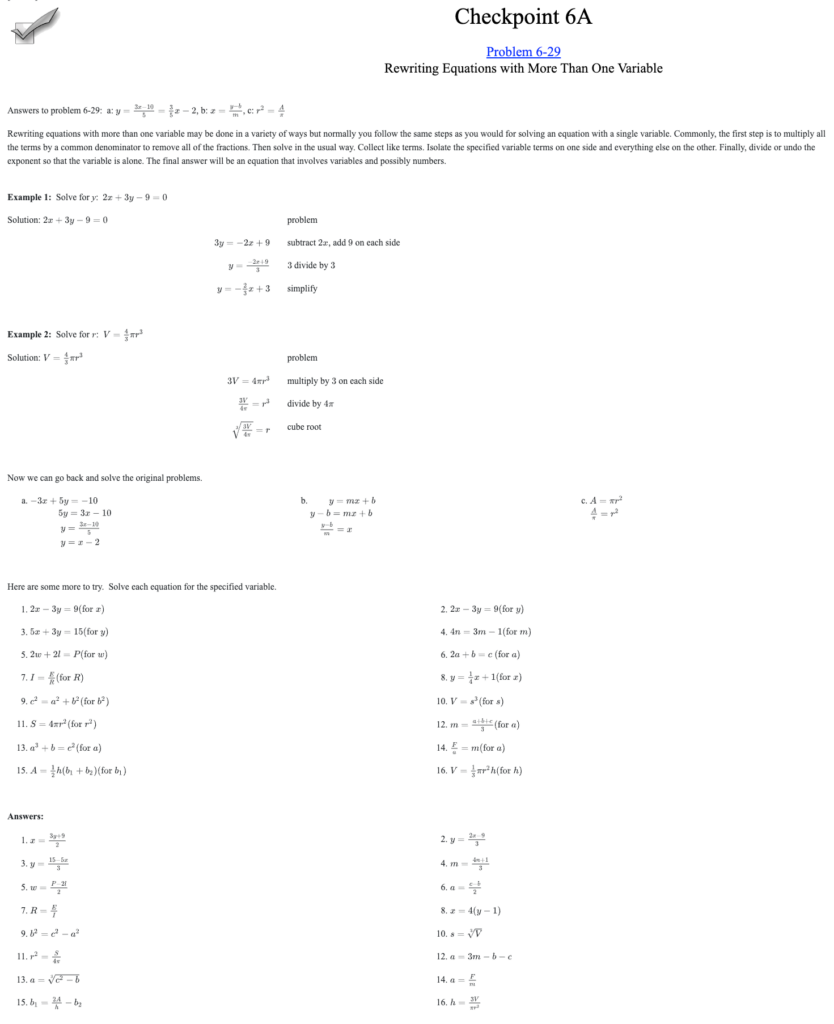Nicholas A. Love, Chicago, IL, NickLove@cpm.org
CPM teacher Lauren Hall created a buzz among CPM’s Professional Learning staff in December of 2022. “So this is amazing,” was the message I received in Slack when Lauren started posting about her Intervention Throwback Thursday on Twitter.
After we shared the Twitter thread with more CPM staff, I knew we had to reach out to Lauren and learn more about her math story, what drives her creativity, and how she ended up with students posting videos about math on TikTok.
Not only did we hear back from Lauren, but from some of her students as well! So enjoy this window into a CPM classroom—and make sure you read all the way to the end of the interview for some teachers-helping-teachers encouragement.
Q: What are your math teacher and CPM origin stories?
A: This is my 8th year teaching high school math. I started teaching at a private school for 3 years, where we did traditional math classes like I grew up taking (pre-algebra, algebra, geometry, etc.). Then, I moved to a public school that had recently adopted the CPM curriculum, and I immediately fell in love!
This is my 5th year teaching with CPM, and I have attended CPM conferences, presented at the 2022 CPM [Teacher] Conference, and I am presenting at two sessions at the upcoming 2023 conference. I have learned so much about math since I was a student as I’ve been teaching with the CPM curriculum and facilitating the learning of my students.
Q: How do you keep your students engaged and excited about math?
A: Student Makaela says of Lauren, “You make learning fun. You turn everything into a game. Keeps people competitive and active.”
Q: How do you keep yourself engaged and excited about math?
A: I get inspired on Twitter by seeing different ideas people share. I love talking with other math teachers, and just other teachers in general, about cool things they are doing in their classrooms. Our Tech and Innovation Team at our district does a great job of facilitating training and [professional development] where I have learned about incorporating [the] Voice and Choice [protocol] regularly within my classroom.
Q: Can you share about your process and inspiration behind activities like the Parent Function Dance and the Taco Bell Choice Menu Board?
A: I was inspired to do the Parent Function Dance because of the Teacher Notes in the CPM textbook for section 2.2.3 in Integrated Math 3; the suggested lesson activity is to do function aerobics. So I thought that instead of doing it as a class, give them a choice to make a TikTok.
I was inspired for my Taco Bell Choice Menu because it was the first week of the new trimester with a new group of students in Math 3. They had all come from a variety of teachers, and I didn’t know all of them and wanted to meet them where they were at in their learning of quadratics. I had read somewhere, probably Twitter, that instead of calling problems “easy,” “medium,” or “hard,” you can call them mild, medium, and spicy. This immediately made me think of Taco Bell, and I quickly created the Taco Bell Choice Menu on Canva.
Q: How did your students respond to the Parent Function Dance?
A: Only about two groups of students from each class chose to do the Parent Function Dance activity on TikTok. But they had a lot of fun, and once they shared the link with me, I shared it the next day with all of my classes, and everyone enjoyed watching the videos.
Student Faith explains, “I found it very entertaining and engaging to watch.”
Q: There are many demands on class time these days. How do you balance pacing and covering content with doing extra activities (like the dance challenge)?
A: I have attended a lot of [professional development] from our Tech and Innovation Team at our district that emphasizes [the] Voice and Choice [protocol]. Since we came back from distance learning, I have incorporated “Intervention Days” into my pacing calendar for each course. I try to have one every other or every third week. This is a day when I can see where my students are struggling, and I can put together some sort of playlist of different activities that students can choose to work on. While they are working on the activities of their choosing, I meet with every student and work one-on-one with them on a specific topic that I choose for that day.
Q: What encouragement would you share with your fellow math teachers?
A: There is always time to allow for Voice and Choice! Plan for intervention days when you pace out your curriculum. Sometimes it is worth doing a double lesson on one day just to have a flexible day for targeted interventions. Also… beg, borrow, and steal. Very rarely do I come up with ideas all on my own or create anything from scratch. I get inspired by things I hear about on Twitter, blog articles, or from my colleagues and ask for a copy and tweak it to make it my own to fit my and my students’ needs.


